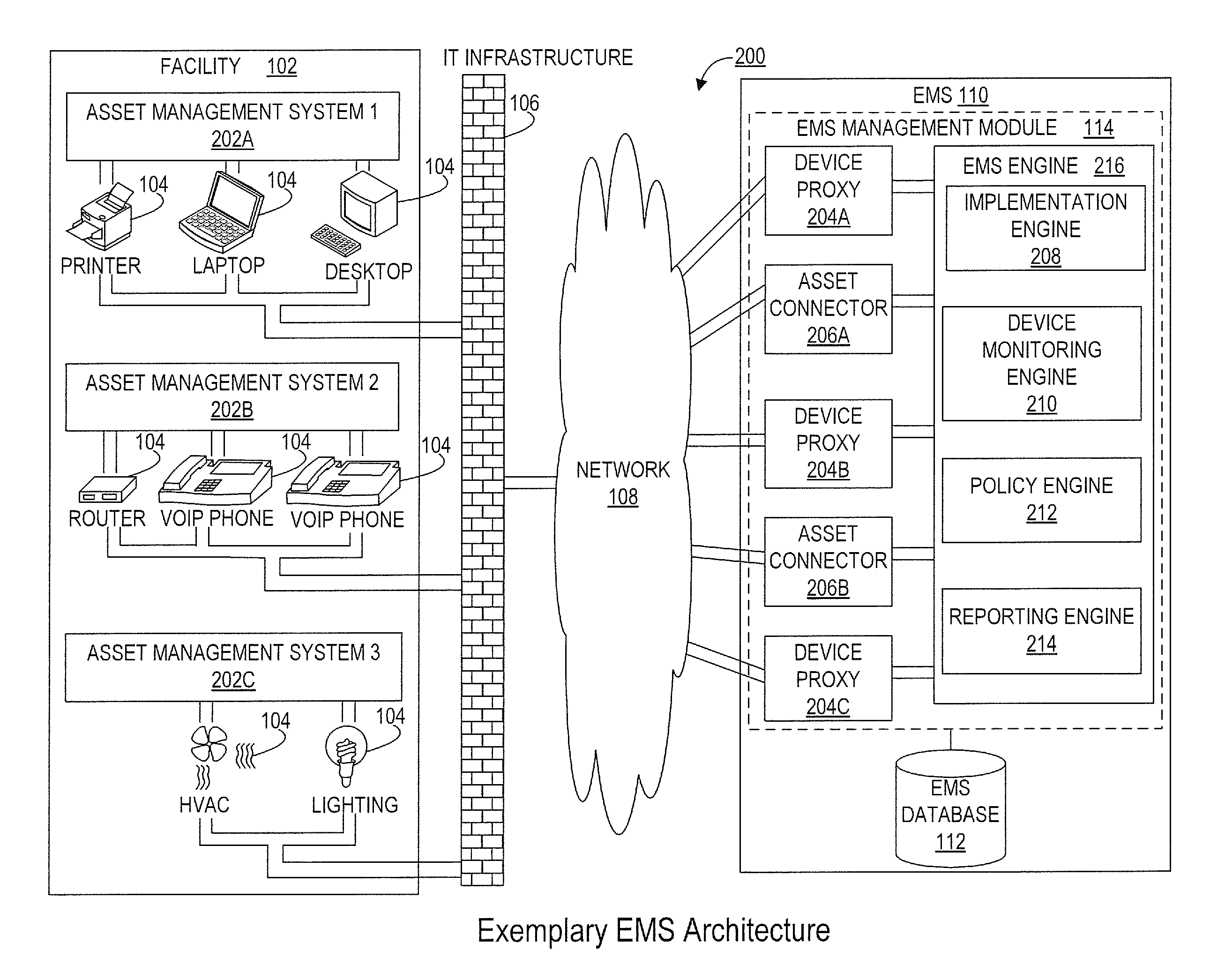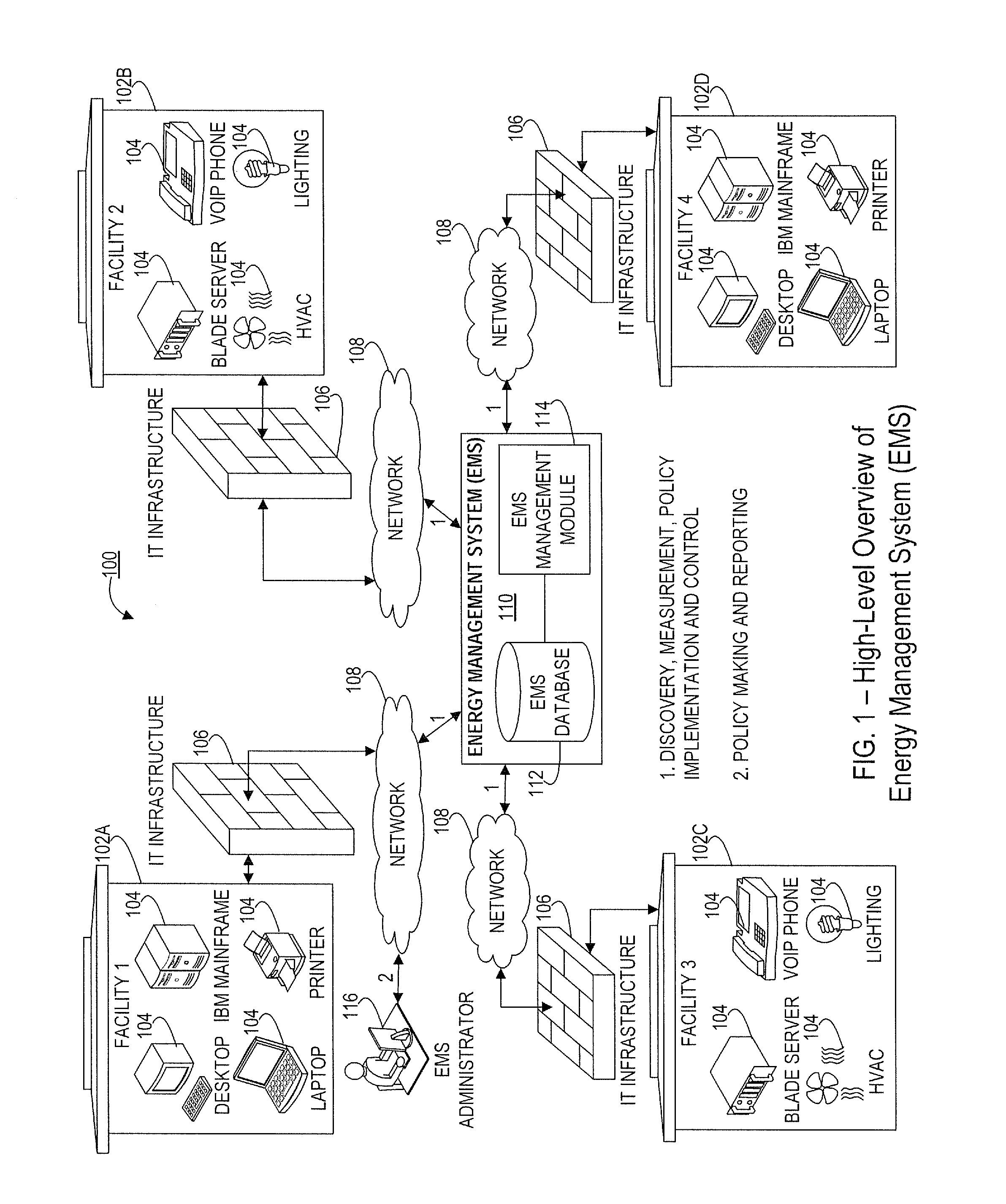System and methods for automatic power management of remote electronic devices using a mobile device
- Summary
- Abstract
- Description
- Claims
- Application Information
AI Technical Summary
Benefits of technology
Problems solved by technology
Method used
Image
Examples
Embodiment Construction
[0049]Prior to a detailed description of the disclosure, the following definitions are provided as an aid to understanding the subject matter and terminology of aspects of the present systems and methods, are exemplary, and not necessarily limiting of the aspects of the systems and methods, which are expressed in the claims.
DEFINITIONS / GLOSSARY
[0050]Action: an activity or task that is executed under the direction of an energy management system (EMS) in connection with performing energy efficiency management or monitoring of an asset. Examples of actions performed on assets include, but are not limited to, changing the power state of the asset, viz. from power on mode to hibernate mode, notifying an EMS administrator via email regarding the change of the power state of an asset, running a script written by a programmer, etc.
[0051]Active Region: a geographic, physical, spatial, or temporal area that, when a user's mobile device is contained therein, triggers an action with respect to ...
PUM
 Login to View More
Login to View More Abstract
Description
Claims
Application Information
 Login to View More
Login to View More - R&D
- Intellectual Property
- Life Sciences
- Materials
- Tech Scout
- Unparalleled Data Quality
- Higher Quality Content
- 60% Fewer Hallucinations
Browse by: Latest US Patents, China's latest patents, Technical Efficacy Thesaurus, Application Domain, Technology Topic, Popular Technical Reports.
© 2025 PatSnap. All rights reserved.Legal|Privacy policy|Modern Slavery Act Transparency Statement|Sitemap|About US| Contact US: help@patsnap.com



